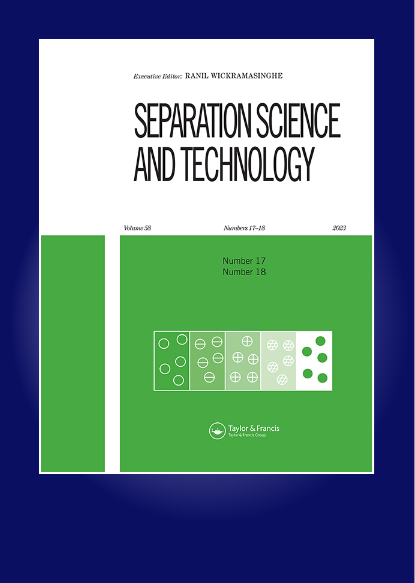Characterization and gravity concentration studies on spodumene bearing pegmatites of India
IF 2.3
4区 工程技术
Q3 CHEMISTRY, MULTIDISCIPLINARY
引用次数: 0
Abstract
The exclusive properties of lithium make it indispensable for its diversified applications, resulting in a steep increase in the present-day demand. In the present investigation, characterization and laboratory beneficiation studies were carried out on the spodumene-bearing lithium pegmatites of India. The major minerals associated with the sample are spodumene, quartz, albite, orthoclase, and muscovite. The chemical analysis results of the collected samples show a variation of Li2O content between 0.02 to 1.85%. The gravity concentration studies were carried out on the feed material with a Li2O content of 1.10%. Gravity concentration studies following heavy liquid separation (HLS), mineral jig, shaking table, and Falcon concentrator were used to enrich the spodumene content. The sink and float analysis on feed material showed that the spodumene mineral is fairly liberated. A better separation of spodumene from the associated silicate gangue was achieved in HLS and mineral jig. Even though fine particles liberated well, separation in the shaking table and Falcon concentrators were inferior due to lower concentration criteria (CC-1.33). Further, the separation efficiency (SE) has been computed for all gravity concentrators. HLS has higher SE than the mineral jig, shaking table, and Falcon concentrator for separating spodumene from the silicate gangue.印度含锂辉石伟晶岩特征及重力富集研究
锂的独特性质使其成为其多样化应用中不可或缺的元素,从而导致当今需求的急剧增长。在本研究中,对印度含锂辉石的锂伟晶岩进行了表征和实验室选矿研究。与样品伴生的主要矿物为锂辉石、石英、钠长石、正长石和白云母。化学分析结果表明,样品的Li2O含量在0.02 ~ 1.85%之间变化。对Li2O含量为1.10%的原料进行了重选研究。采用重液分离(HLS)、选矿跳汰机、振动台和Falcon选矿机等方法进行了锂辉石富集试验。对进料的沉浮分析表明,锂辉石矿物被充分释放。在高沸石和矿物跳汰器中,锂辉石与伴生硅酸盐脉石的分离效果较好。尽管细颗粒释放良好,但由于较低的浓度标准(CC-1.33),振动台和Falcon选矿厂的分离效果较差。此外,还计算了各重选厂的分离效率(SE)。从硅酸盐脉石中分离锂辉石时,HLS比矿物跳汰机、振动台和Falcon选矿机具有更高的SE。
本文章由计算机程序翻译,如有差异,请以英文原文为准。
求助全文
约1分钟内获得全文
求助全文
来源期刊

Separation Science and Technology
工程技术-工程:化工
CiteScore
6.10
自引率
3.60%
发文量
131
审稿时长
5.7 months
期刊介绍:
This international journal deals with fundamental and applied aspects of separation processes related to a number of fields. A wide range of topics are covered in the journal including adsorption, membranes, extraction, distillation, absorption, centrifugation, crystallization, precipitation, reactive separations, hybrid processes, continuous separations, carbon capture, flocculation and magnetic separations. The journal focuses on state of the art preparative separations and theoretical contributions to the field of separation science. Applications include environmental, energy, water, and biotechnology. The journal does not publish analytical separation papers unless they contain new fundamental contributions to the field of separation science.
 求助内容:
求助内容: 应助结果提醒方式:
应助结果提醒方式:


